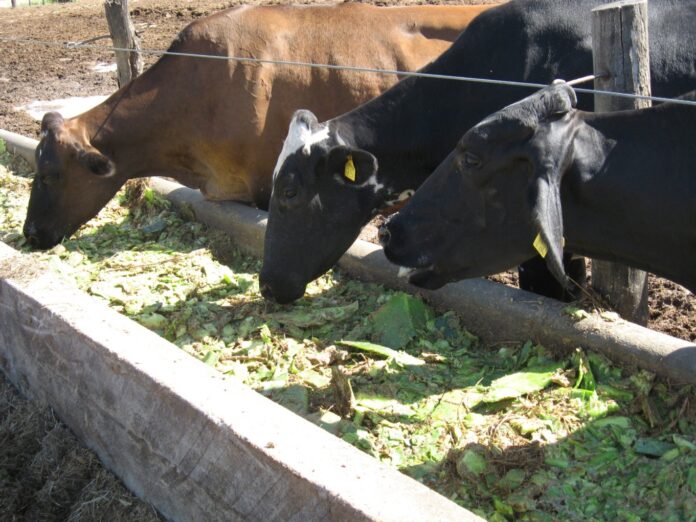Plant poisoning commonly occurs during dry seasons because most poisonous plants tend to adapt well to dry seasons and will remain green and deceptively appetising to the eye.
Plant poisoning is difficult to diagnose because different plant poisons have different signs. History of feeding is of key importance when plant poisoning is suspected.
Another pointer of plant poisoning is when an animal accessed a specific plant or was new in a certain area and is showing some signs of sickness. Some scholars say most plants with yellow flowering heads are toxic to livestock and they will be rejected by animals.
However, animals maybe tempted to feed on them when it is very dry and pastures are scarce.
Some plants are only poisonous at certain stages of growth, for example potatoes that have green upon exposure to sunlight have been reported to be poisonous.
In some instances, only certain parts of the plant maybe poisonous while other parts may be safe. Feed poisoning can also occur when stored fodder for example hay, becomes contaminated with poisonous plants at the time of preparation.
Plant poisoning can only affect animals at a certain stage, for example cotton seed poisoning occurs in young ruminants and pigs.
Animals resident in a particular area will know which plants to feed on and which ones to avoid. Nonetheless, newly introduced animals may not have the experience to know what is bad or good and may end up ingesting poisonous plants.
Bracken Fern Poisoning
In Kenya, bracken fern poisoning is common in the highlands where this fern is found in large quantity and can easily be ingested among other feeds or can contaminate hay and silage during preparation. Both leaves and roots of bracken fern are poisonous.
Clinical signs of bracken fern poisoning vary according to animal species. It’s harmful effects are a result of continuous exposure for a minimum of three months.
This is important because signs of bracken fern poisoning maybe observed long after an animal has been removed from contaminated pastures.
In cattle, the most notable symptom is presence of blood clots in the dung and bloody urine, fever, difficult breathing in calves, bleeding may be observed from body openings death will normally follow due to excessive loss of blood.
At postmortem the animal will have tumours in the urinary bladder. In horses and pigs, it is characterised by loss of appetite, emaciation, difficulties in walking and if not treated, death can result.
The most effective way of preventing bracken poisoning is to remove animals from contaminated pastures or removal of the bracken fern from pastures.
Castor oil plant poisoning
Extracts of castor oil plant seeds are used in drug manufacturing industry, apart from the seeds all parts of this plant are poisonous.
This can easily contaminate animal feeds. Signs of castor oil plant poisoning include bloody diarrhoea, difficult walking and muscular spasms.
Cotton seed poisoning
Cotton seeds contain a poisonous substance called gossypol. This is especially toxic to young ruminants and pigs but rarely causes any problem in mature animals.
Meet Kenyan farmer using chicken poop to power his home, car, cooker, water boiler
Poisoning may also occur in high producing dairy animals with high feed intake and in goats. Gossypol is destroyed by heat and therefore cotton seed cake manufactured by heat treatment is safe for animals of all ages.
Like in bracken fern poisoning, cotton seed poisoning requires cumulative exposure for about two months for clinical signs to be observed. There is no treatment for this and the only preventive measure is to stop feeding animals on suspected feeds with high free gossypol.
Signs of gossypol poisoning include laboured breathing, loss of appetite, low growth rate and general weakness.








